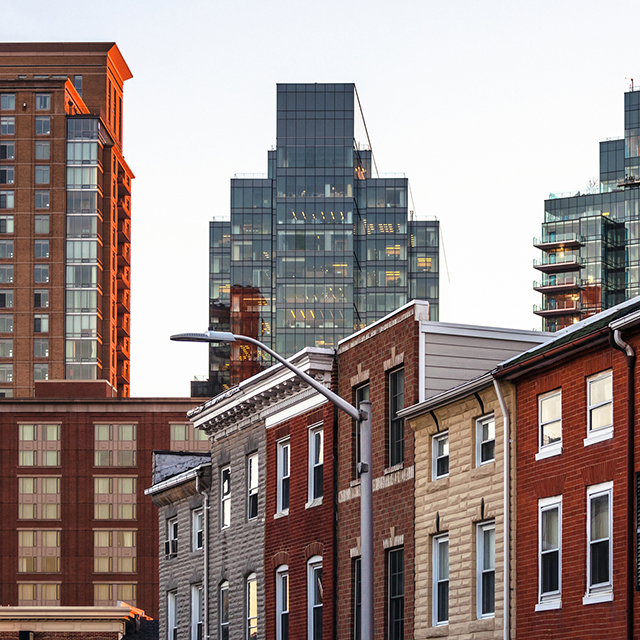Paul B. Rothman, dean of the medical faculty and CEO of Johns Hopkins Medicine, recently updated more than 80 East Baltimore residents and community leaders on local Johns Hopkins initiatives as part of his Community Conversations series.
During the third annual event, held at Henderson-Hopkins School on Nov. 14, Rothman spoke about community concerns including employment, the opioid crisis, school performance and trauma response programs. He also introduced the architects working on the early planning and design stages for a building to be named after Henrietta Lacks, the East Baltimore native and Johns Hopkins Hospital patient whose cells became the source of many of the most important discoveries in medical science.
Community Conversations meetings give East Baltimore residents a chance to discuss neighborhood issues with Rothman and other Johns Hopkins Medicine leaders and staff members.
The dean began by praising Henderson-Hopkins principal Peter Kannam for the school’s improved math and reading scores, as well as for quadrupling the number of after-school activities. The kindergarten through eighth grade school enrolls about 550 students.
Rothman also told the group that the school now offers breakfast, lunch and dinner to its students, serving more than 1,000 meals each day.
On the topic of jobs, the dean said that since the previous Community Conversation last fall, Johns Hopkins Medicine has hired 381 people from city neighborhoods with high unemployment. He also cited Johns Hopkins’ leadership in hiring people returning from incarceration — The Johns Hopkins Hospital has employed 145 returning citizens in the past year.
Supporting local small and minority business has been another institutional focus, Rothman said, noting that Johns Hopkins Medicine spends about $118 million per year with local vendors. Since the HopkinsLocal program began three years ago, nearly a quarter of all construction spending at Johns Hopkins has benefited businesses owned by minorities or women.
“Over the past two years, we’ve helped 42 of these businesses expand their skills through our BLocal BUILD College,” said Rothman, referring to a four-month training course that helps small construction companies in the metropolitan area compete for Johns Hopkins business.
Rothman also said Johns Hopkins Medicine is helping to reduce drug overdose deaths in Baltimore through a project involving the Johns Hopkins schools of medicine, nursing and public health. Led by Johns Hopkins Bayview Medical Center physician Michael Fingerhood, the effort treats addiction by providing judgment-free support.
Community residents have identified traumatic stress as a deep-rooted problem for people living in impoverished areas. During the Community Conversation, Rothman led a discussion by a panel of Johns Hopkins experts who are working to address traumatic stress in East Baltimore and its causes.
Later, attendees were invited to meet a design team from Vines Architecture, the North Carolina firm doing early-stage work on the Henrietta Lacks building. The architects encouraged neighborhood residents to share their ideas for the structure.
“We see this as more than a building named for Henrietta Lacks,” said Victor Vines, owner president of Vines Architecture. “We want this to be where people can learn about how medical science works. It should be a space for the community to use. And it should embody Mrs. Lacks’ legacy and contribution.”
The building will be located at the corner of Rutland and Ashland avenues, on the north end of the Johns Hopkins medical campus. Groundbreaking is planned for 2020, with completion scheduled two years later.
